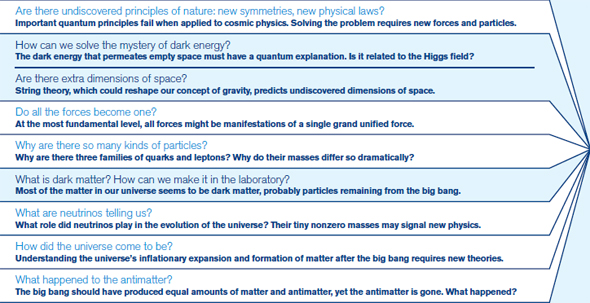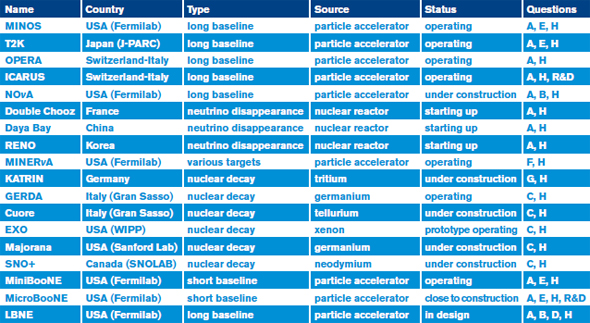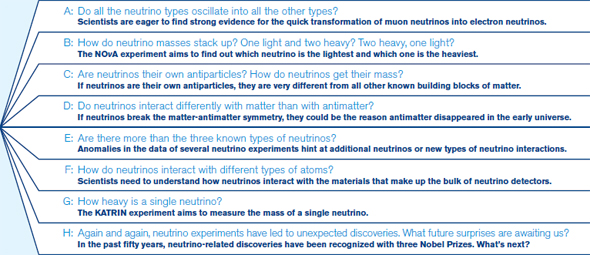Deconstruction: Neutrino experiments
Neutrinos zip straight through the Earth, while rarely leaving a trace. Yet these particles may hold answers to many of the key questions of 21st century particle physics. Around the world, scientists are creating an array of increasingly sophisticated neutrino experiments to find these answers.
What do we know about neutrinos?
Scientists have discovered many surprising and often puzzling things about neutrinos since 1956, when Frederick Reines and Clyde Cowan found the first experimental evidence for these elusive particles in an experiment that they referred to as Project Poltergeist. Today we know:
- Neutrinos are among the most abundant types of particles in the universe.
- Neutrino sources include fusion processes in the sun; the fission processes in nuclear power stations; the decays of isotopes such as tritium and germanium; the collisions of cosmic rays with atoms in Earths atmosphere; the collisions produced by particle accelerators; supernovae.
- Neutrinos have no electric charge and are immune to the strong nuclear force.
- Neutrinos have a tiny mass: the heaviest neutrino has less than a millionth the mass of an electron.
- Neutrinos come in three different types, or flavors: electron, muon, and tau neutrinos.
- Neutrinos can change (oscillate) from one type to another. The sun, for example, creates electron neutrinos. By the time they arrive on Earth, the majority have turned into muon and tau neutrinos.
- Neutrinos are hard to detect. Because they only interact with ordinary matter via the weak nuclear force, most of them zip through the earth unscathed.
 |
Neutrino experiments address the key questions of particle physics
In 2004, the Quantum Universe report, published by the U.S. Department of Energy and the National Science Foundation, identified the nine most important questions to be addressed by future particle physics experiments. Neutrino experiments will play a major role in finding the answers to most of them:
 |
| (Click image for larger version) |
Neutrino experiments
Experiments around the world, including those below, aim to answer fundamental questions about neutrinos. They use different neutrino sources, particle detector technologies and experimental strategies.
 |
| (Click image for larger version) |
Numerous neutrino astrophysics experiments, not listed here, look for cosmic neutrinos to learn more about celestial objects. |
 |
The most pressing questions about neutrinos
Scientists have specific questions about neutrinos and their role in our universe. By addressing these questions, neutrino experiments help answer the key questions of 21st-century particle physics. The most important neutrino questions include:
 |
| (Click image for larger version) |
| Text: Kurt Riesselmann |
Click here to download the pdf version of this article.






